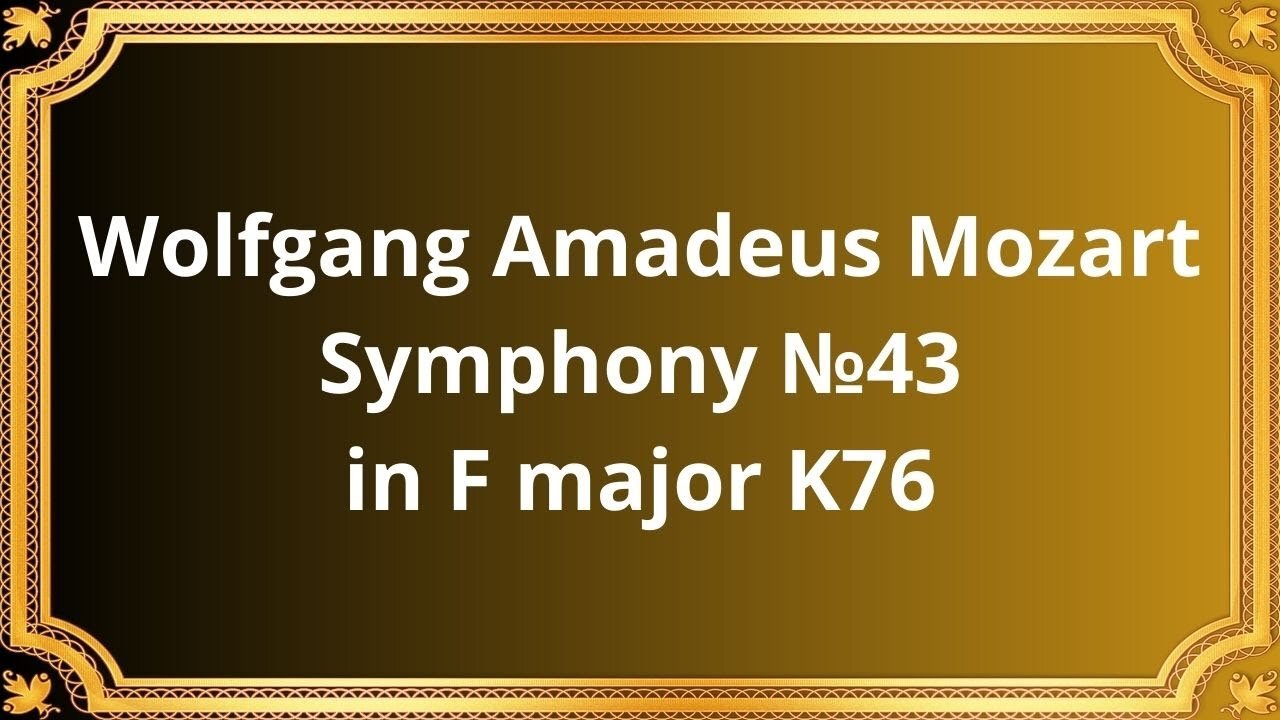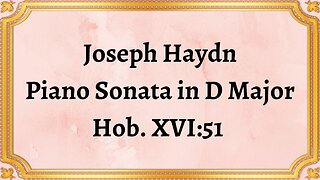Premium Only Content

Wolfgang Amadeus Mozart Symphony №43 in F major K76
#Mozart#Chamber_music#Classical_music#Sonata#musical_composition
Wolfgang Amadeus Mozart is undoubtedly one of the most renowned composers of all time, with his works being celebrated for their elegance, complexity, and beauty. Among his numerous compositions, Symphony No. 43 in F major K76 is considered to be one of his most iconic pieces. In this article, we will explore the key features of this masterpiece of classical music.
Mozart composed Symphony No. 43 in F major K76 when he was just 17 years old. It was written during his trip to Italy in 1771-1772, which was a pivotal moment in his musical career. The young Mozart was greatly inspired by the Italian style of music, and this symphony is a perfect example of his assimilation of Italian music and his own unique style.
Symphony No. 43 in F major K76 consists of four movements, which are arranged in the traditional format of a classical symphony. The first movement, marked allegro, is a fast-paced and energetic piece that showcases Mozart's mastery of counterpoint. The second movement, marked andante, is a slow and lyrical piece that provides a contrast to the first movement. The third movement, marked menuetto, is a light and graceful piece that serves as a scherzo. The final movement, marked allegro, is a lively and celebratory piece that brings the symphony to a triumphant close.
Symphony No. 43 in F major K76 is notable for its use of orchestration, which highlights Mozart's skill in blending different instruments together. The symphony is scored for two oboes, two horns, and strings, which creates a rich and full sound. The use of the horns in the second movement is particularly striking, as they provide a warm and mellow sound that complements the strings. The overall effect is a symphony that is both grand and intimate, with moments of both drama and tenderness.
Symphony No. 43 in F major K76 is an important piece of music because it showcases Mozart's early talent and foreshadows his later accomplishments. The symphony is also notable for its influence on later composers, particularly those of the classical era. Beethoven, for example, was known to have studied and admired Mozart's symphonies, and Symphony No. 43 in F major K76 may have had an impact on his own compositional style.
In conclusion, Symphony No. 43 in F major K76 is a masterpiece of classical music that showcases Mozart's early talent and foreshadows his later accomplishments. The symphony is notable for its use of orchestration, its elegant structure and form, and its influence on later composers. Today, it remains a popular and beloved piece of music, and its enduring legacy is a testament to Mozart's genius.
-
 6:07
6:07
Classical music_Music Inspiration
22 days agoJoseph Haydn Piano Sonata in D Major, Hob. XVI:51
701 -
 10:42:19
10:42:19
Reolock
15 hours agoWoW Classic Hardcore (LVL 60) | RAID DAY | Rumble FIRST HC Raid
57K4 -
 3:10:03
3:10:03
Barry Cunningham
12 hours agoTRUMP WEEKEND BRIEFING! MORE WINNING...MORE LEFTIES LOSING IT!
45.5K33 -
 2:20:09
2:20:09
Tundra Tactical
12 hours ago $2.14 earnedIs Trumps Executive Order A Second Amendment Wishlist???: The Worlds Okayest Gun Live Stream
28.1K1 -
 2:33:51
2:33:51
John Crump Live
17 hours ago $19.75 earnedSaturday Night Main Event!
88.8K8 -
 13:57
13:57
TimcastIRL
22 hours agoTrump NUKES IRS After DOGE Investigation, OVER 9000 Employees To Be FIRED
109K168 -
 13:35
13:35
Russell Brand
15 hours agoPFIZER JUST MADE THEIR NEXT MOVE AND EXPERTS ARE TERRIFIED
131K245 -
 1:15:57
1:15:57
Victor Davis Hanson Show
1 day agoOver Here, Over There: the Russo-Japanese War and Trumpian Peace Policy
61.9K35 -
 23:55
23:55
MYLUNCHBREAK CHANNEL PAGE
1 day agoThe Nephilim Are Here
92.8K82 -
 1:00:58
1:00:58
Break The Cycle w/ Joshua Smith
12 hours ago $1.63 earnedBreak The Cycle Ep. 247: Funny Guys w/ Robbie "The Fire" Bernstein
28.7K1